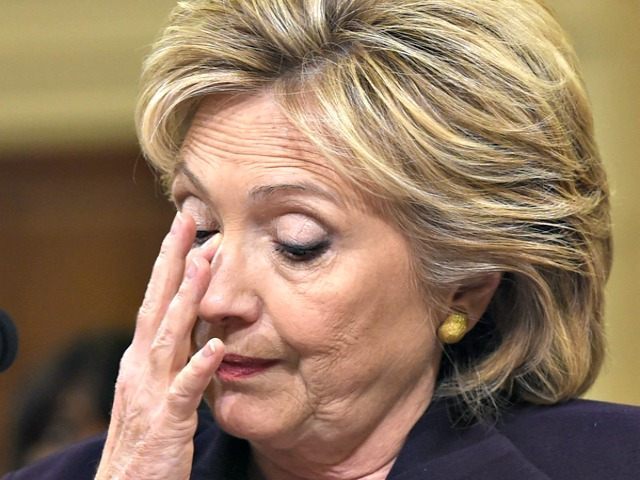Another piece of the scandal surrounding Hillary Clinton and Benghazi fell into place last week when the State Department released to Judicial Watch new documents containing telephone transcripts from the evening of September 12, 2012.
The documents reveal that the then-secretary of state informed then-Egyptian Prime Minister Hisham Kandil that the deadly terrorist attack on the U.S. compound the day before “had nothing to do with the film.”
Recall that on the evening of September 11, Mrs. Clinton issued an official State Department press statement, approved by the White House, placing the blame for the attack on an Internet video:
Some have sought to justify this vicious behavior as a response to inflammatory material posted on the Internet. The United States deplores any intentional effort to denigrate the religious beliefs of others. Our commitment to religious tolerance goes back to the very beginning of our nation. But let me be clear: There is never any justification for violent acts of this kind.
Yet the next day, September 12, in her conversation with Kandil, Clinton said, “We know the attack in Libya had nothing to do with the film. It was a planned attack – not a protest.” Kandil responded, “You’re not kidding. Based on the information we saw today we believe that group that claimed responsibility for this is affiliated with al-Qaeda.”
Nevertheless, two days later, at the ceremony when the bodies of the four Americans who were killed arrived in the United States, Clinton again left the implication that it was all due to the video:
This has been a difficult week for the State Department and for our country. We’ve seen the heavy assault on our post in Benghazi that took the lives of those brave men. We’ve seen rage and violence directed at American embassies over an awful Internet video that we had nothing to do with.
This became an administration theme. On September 16, then-UN Ambassador Susan Rice, appearing on all the Sunday morning political talk shows, invoked the video. For example, she told Jake Tapper of ABC:
But our current best assessment, based on the information that we have at present, is that, in fact, what this began as, it was a spontaneous — not a premeditated — response to what had transpired in Cairo. In Cairo, as you know, a few hours earlier, there was a violent protest that was undertaken in reaction to this very offensive video that was disseminated.
There are actually two scandals here. The first is Hillary Clinton telling different stories to different foreign leaders about the Benghazi attack – including an admission that it was a terrorist attack.
The second is the State Department’s cover-up of these documents. The Department has forced Judicial Watch to play “whack-a-mole” with Clinton and Benghazi documents. It is no wonder that two frustrated federal court judges granted Judicial Watch discovery into the Clinton FOIA issues.
Here is the story on that:
Clinton’s admission to Kandil was first revealed to the Select Committee on Benghazi on October 13, 2015, and publicized on the day of Mrs. Clinton’s testimony, October 22. However, court filings in Judicial Watch litigation show that the record was only produced after two federal court judges ordered the State Department to produce more Benghazi-related records to us.
Similarly, our litigation also forced the release of the September 11, 2012, email in which Clinton informed her daughter that the attack had been staged by an “Al Qaeda-like group,” rather than as the result of “inflammatory material posted on the Internet,” as Mrs. Clinton had claimed in her official public statement one hour earlier. (So the two big reveals of the Benghazi Select Committee during Clinton’s testimony only came about because of Judicial Watch – and despite the incompetence of Congress.)
The State Department had previously told a federal court that the Kandil document was not responsive to Judicial Watch’s request and resulting lawsuit (Judicial Watch v. U.S. Department of State (No. 1:14-cv-01511)). We were seeking:
Any and all records concerning, regarding, or related to notes, updates, or reports created in response to the September 11, 2012, attack on the U.S. Consulate in Benghazi, Libya. This request includes, but is not limited to, notes taken by then Secretary of State Hillary Rodham Clinton or employees of the Office of the Secretary of State during the attack and its immediate aftermath.
But the State Department then delivered this information last month to us. The records, the State Department told the Court, were found among thousands of new Clinton State Department records supposedly only discovered in December, 2015 – again, two months after the key Kandil document was first produced to the Benghazi Committee.
I provide more analysis in an interview with The Wall Street Journal, which you can watch here.

COMMENTS
Please let us know if you're having issues with commenting.